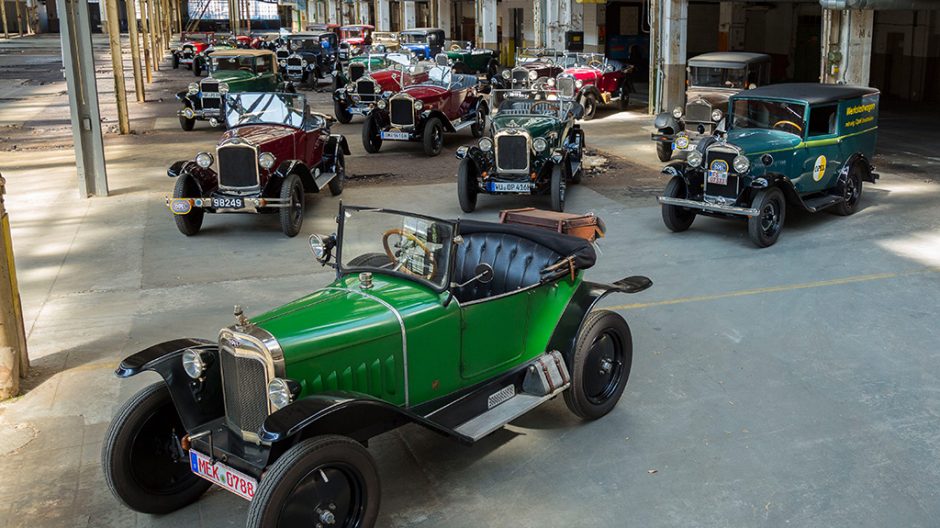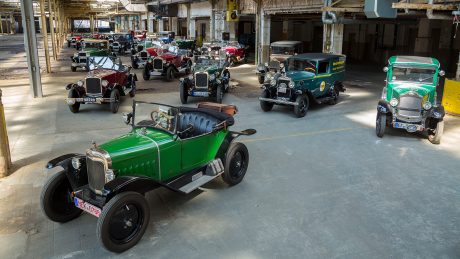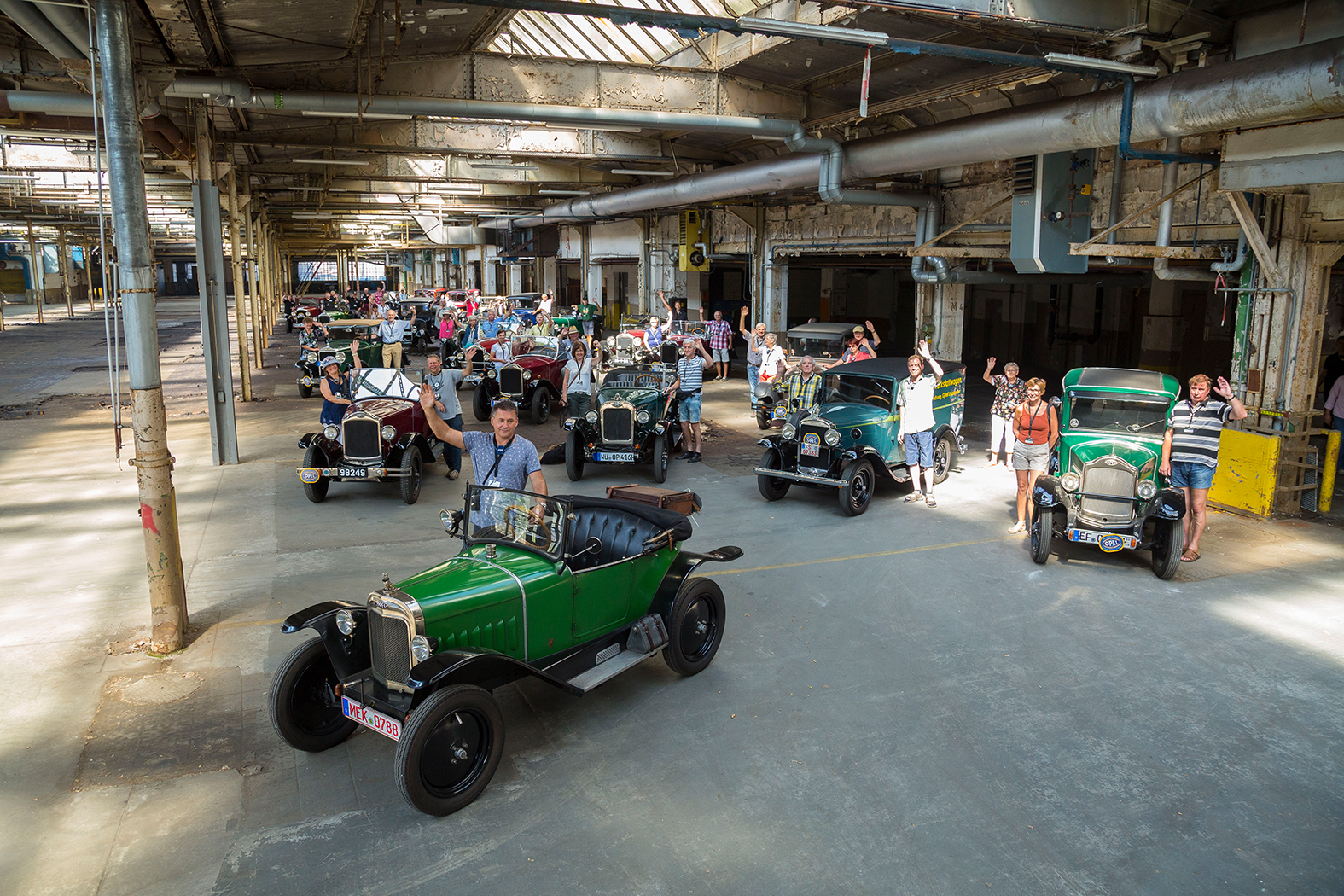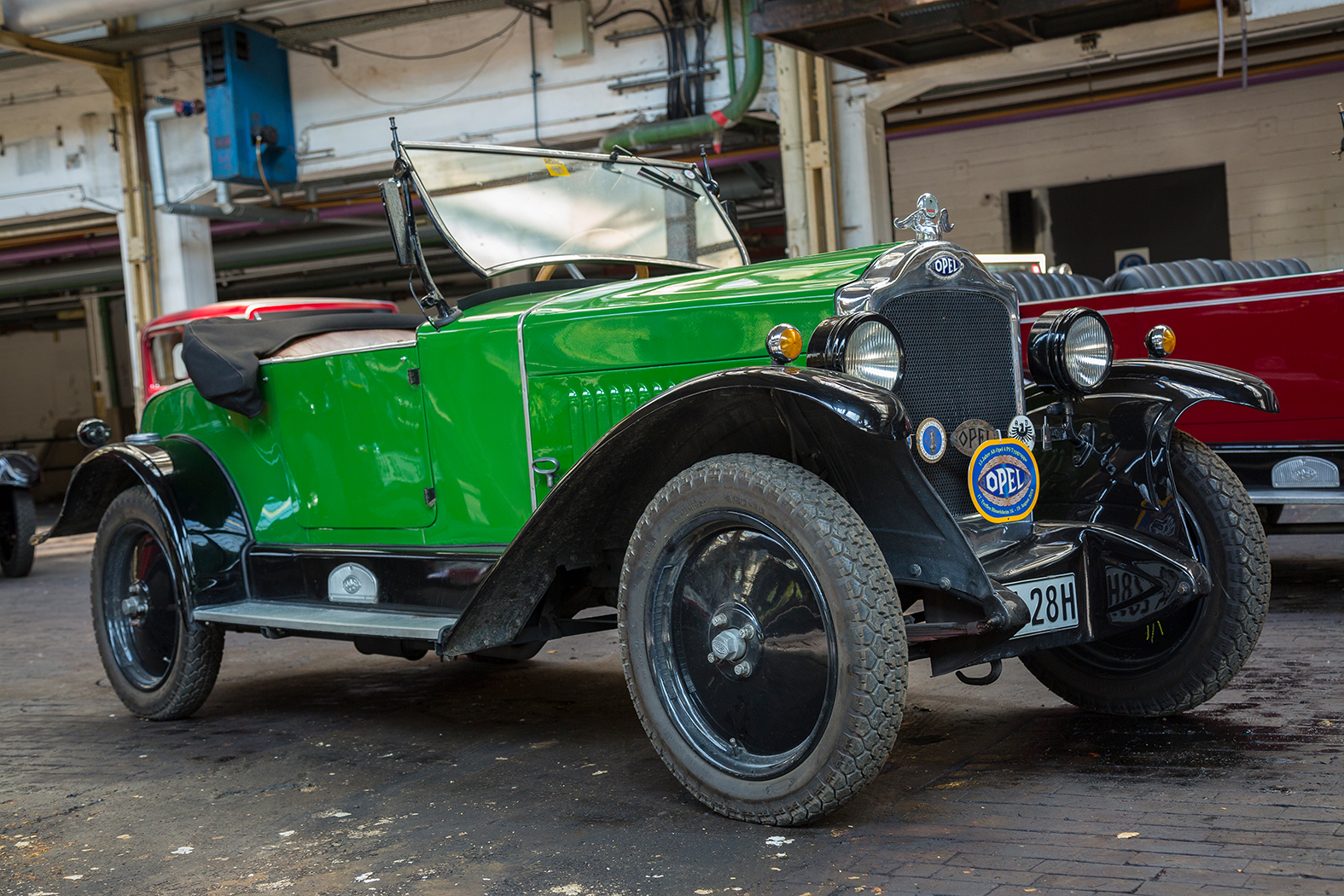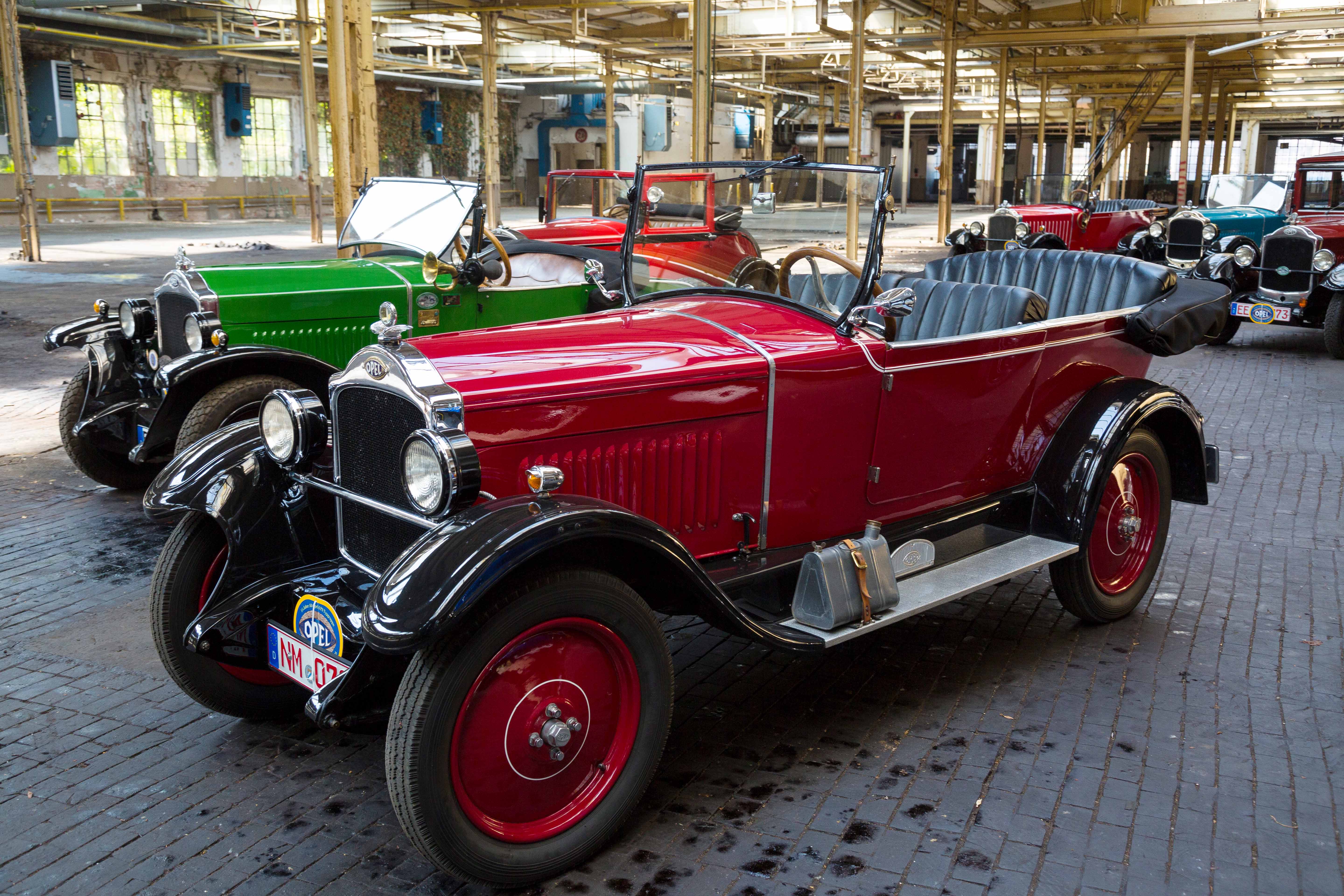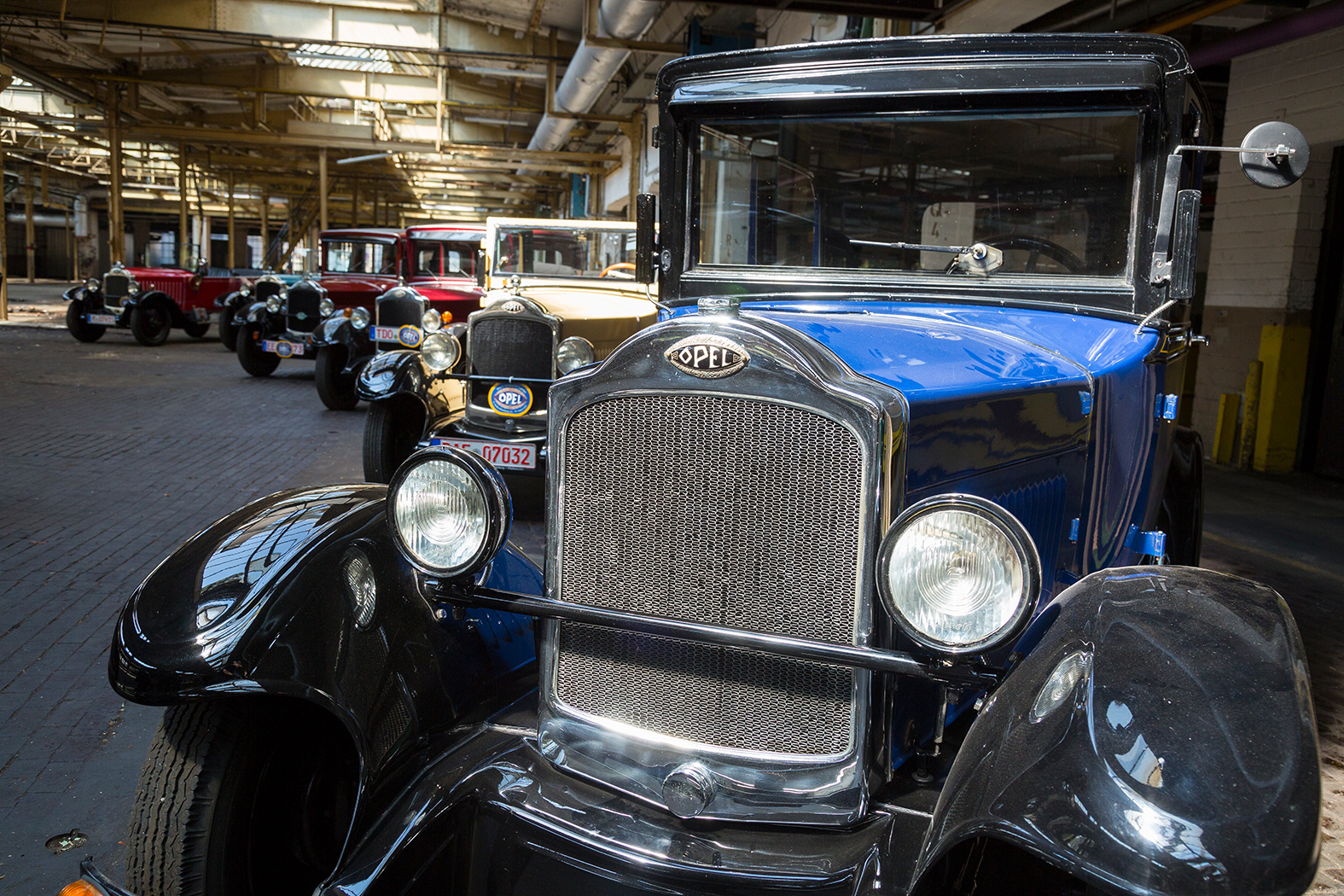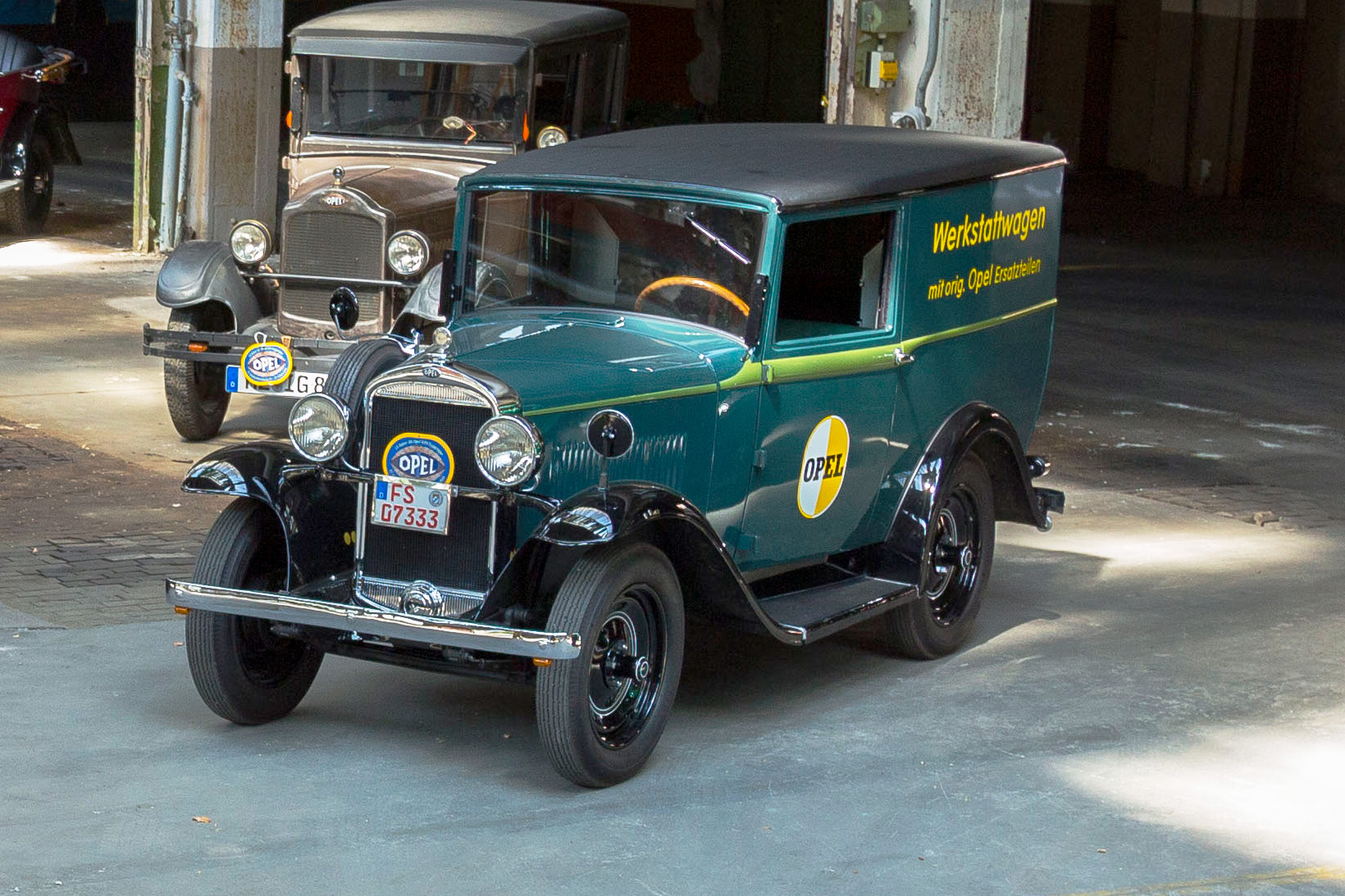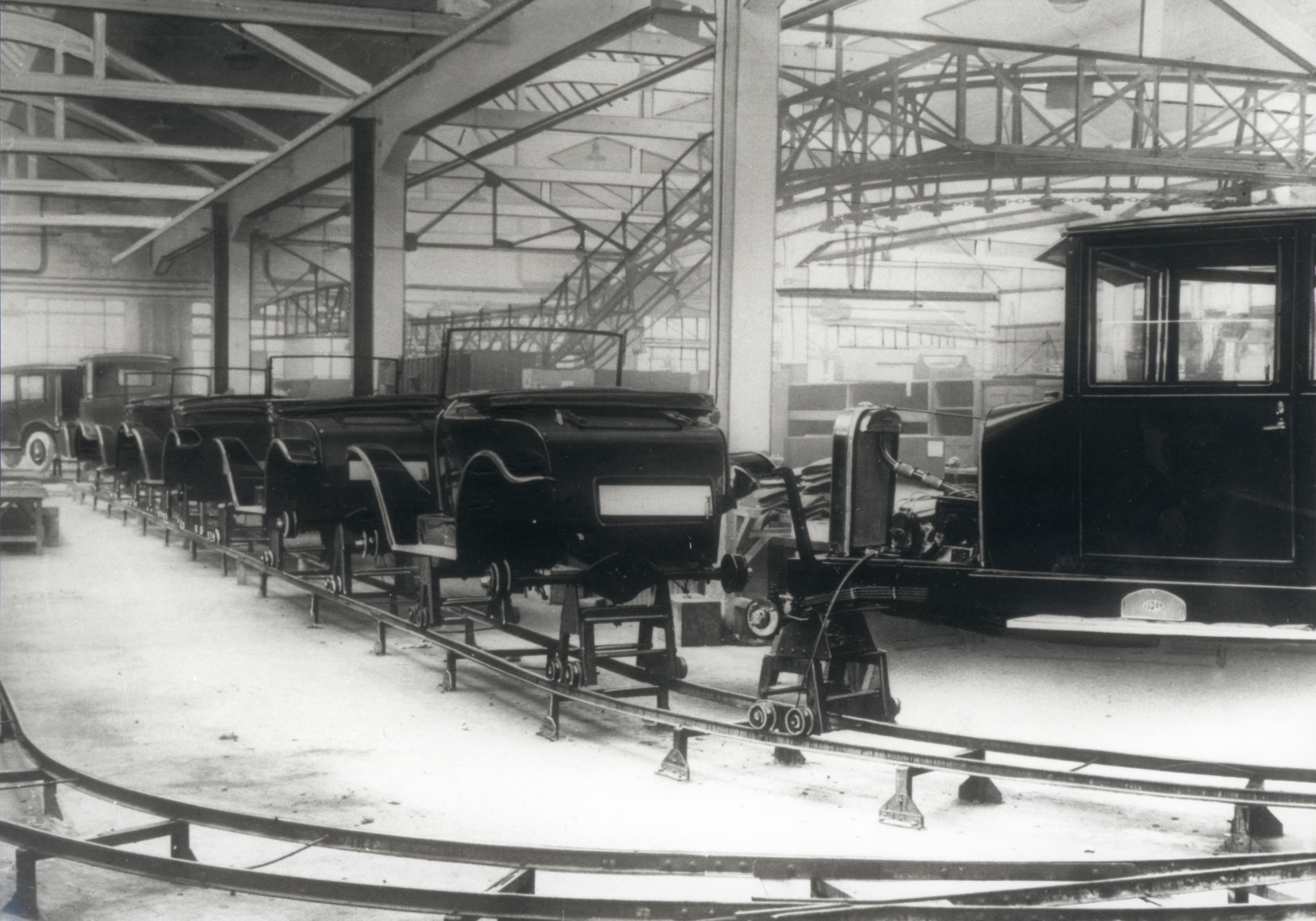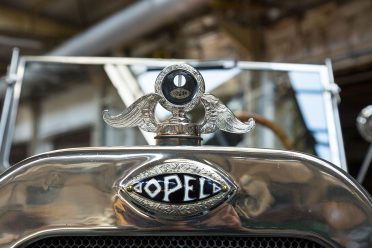
–––––
The Opel 4 PS was the first car from a German automotive company that had been mass-produced on an assembly line.
–––––
Under the partly glazed roof of the old factory, the oldtimers stood in the dappled light and cooled down from the morning’s exertions. They are all at least 90 years old and this was one of the rare occasions when they return to Rüsselsheim for a reunion.
The first Opel 4 PS, affectionately known as the “Laubfrosch” (tree frog) on account of its dark green bodywork, left the Rüsselsheim plant in spring 1924. It was the first car from a German automotive company that had been mass-produced on an assembly line. Opel built around 120,000 units of the 4 PS before production ended in 1931.
Now they are sought-after rarities among vintage car enthusiasts. Today, there are around 100 roadworthy examples in Europe, lovingly cared for by their proud owners. Twenty-nine of the Opel oldies, from Austria, Germany, Luxembourg, the Netherlands and Switzerland, braved the hot weather on August 17 and drove to the Rüsselsheim “Altwerk” (old plant) for the 2018 “Treffen der Opel 4 PS Typgruppe”.
Variety in mass-production
- Das Opel 4 PS Treffen 2018 Laubfrosch und Co. sind in Rüsselsheim selten so zahlreich anzutreffen.
- Variety The Opel 4PS was produced in several versions, here the original two-seater with integrated boot.
- Mehr Platz Ab November 1925 gab es einen offenen Viersitzer.
- Mit Verdeck Mit Verdeck: Ebenfalls ab Ende 1925 war eine viersitzige Limousine im Angebot.
- Fürs Gewerbe Als vierte Variante umfasste die Angebotspalette einen Lieferwagen.
- Fließbandproduktion des 4 PS Die Opel-Brüder setzten ihre in den USA gewonnenen Erkenntnisse in die Tat um. Hier zu sehen die Produktion Opel 4/16 PS von 1926.
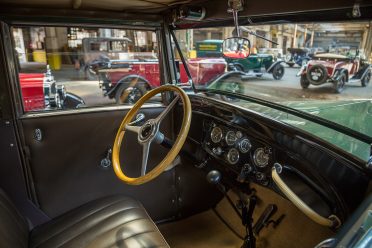
Glorious view Various Opel 4 PS models congregate in the “Altwerk”.
The meeting was organised by Dr. Joachim Busshardt, a safety engineer at Opel, supported by his colleagues Andrew Leuchtmann and Christian Gottheit. “The members of the 4 PS Group are part of the ‘Alt-Opel Interessengemeinschaft’”, explains Busshardt, whose own Opel 4 PS, which is undergoing renovation, dates back to 1928. “We get together every year in another place to share our love of the 4 PS. We decided that the 15th anniversary of the 4 PS group should be held at the historic cradle of the car’s birth.”
Historic cradle
Apart from the pilgrimage to the “Altwerk”, a guided tour of the “Opel Classic Werkstatt” oldtimer collection and “Benzingebabbel” (petrol prattle) over Schnitzel with mushroom sauce and “Äppelwoi” (apple wine) back at the hotel, another highlight of the three-day programme was a visit to the “Opel Rennbahn”.
↑ Video: “Treffen der Opel 4 PS Typgruppe”
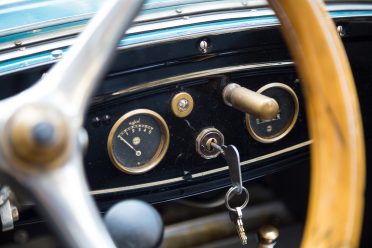
Key position The Opel 4 PS is a milestone in the history of the German automotive industry.
The “Rennbahn” racetrack was built by Opel in 1919. With its banked curves allowing top speeds of almost 140 km/h, the circuit was the fastest in Europe during the 1920s. Famous racing drivers of those days, like Rudolf Caracciola, were among the daring starters.
Fastest racetrack in Europe
Heinz Zettl welcomed the 4 PS group to the “Rennbahn” and explained the oval’s special significance to the history of the “Laubfrosch”. Zettl is a former Opel PR manager and the founder of the “Opel Classic Werkstatt” – no one knows more about the history of the company and the Opel family. The lifelong Opel enthusiast is also the driving force behind “F40 Las Brisas meets Classic Cars”, which has become a Mecca for regular oldtimer meetings at the eponymous restaurant in Rüsselsheim.
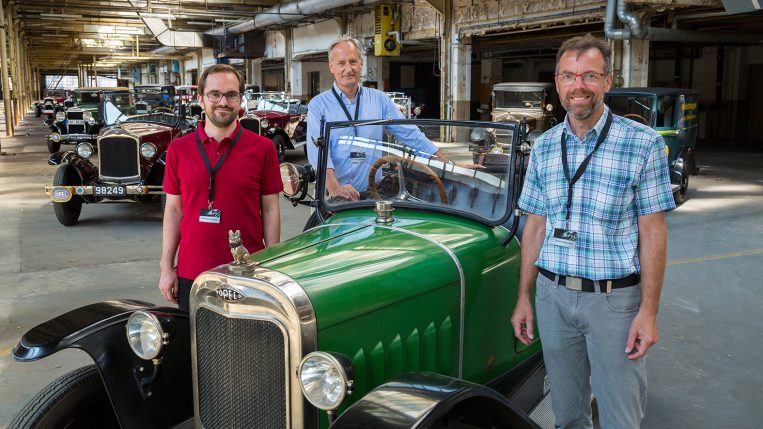
Dynamic trio The Rüsselsheim-homecoming for the Opel 4PS was organised by (from left to right) Opel engineers Christian Gottheit, Andrew Leuchtmann and Joachim Busshardt.
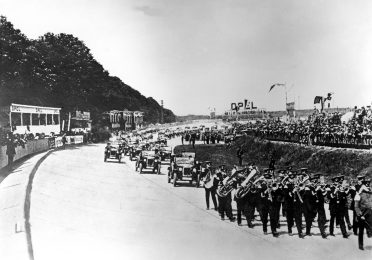
The Opel racetrack 1925 Opel presents a day’s production of the Opel 4 PS.
“Today, the “Rennbahn” is a ‘technisches Kulturdenkmal’ (technical cultural heritage site), only some remnants of the original banking are still visible”, says Zettl. “ But during a race meeting in 1925, a whole day’s production of more than 100 4 PS cars paraded around the circuit in front of thousands of spectators in the grandstands, accompanied by the Opel company orchestra.”
1925: More than
100 “Laubfrosch” on parade
After a drive through the “Hessische Ried” (Hessian marsh, drying up in this summer’s drought) and a ferry-ride across the Rhine, followed by a guided tour of the mysterious Oppenheim cellar labyrinth, the “Opel 4 PS Treffen” reached its final destination in Trebur on the evening of August 18.
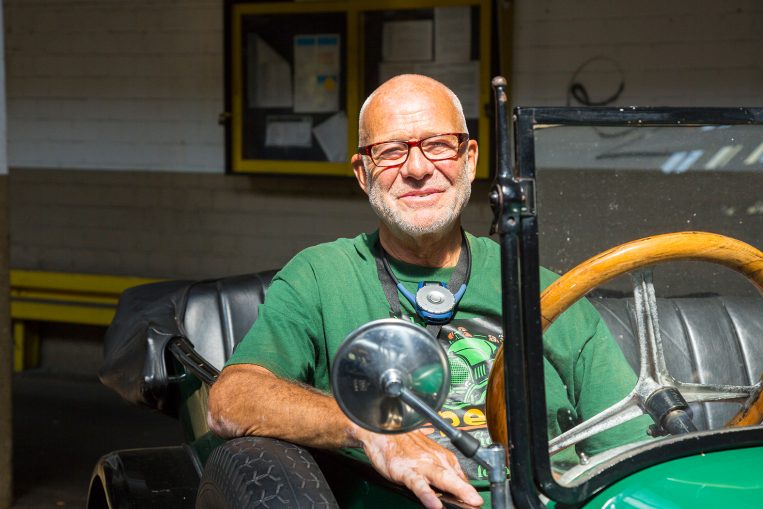
Connected to Rüsselsheim in more ways than one Lutz Maier-Rehm at the wheel of his Opel 4 PS. Maier-Rehm’s grandfather was an Opel employee in Rüsselsheim at the time the car was produced. He then moved to Eisenach in 1925 where he established a successful Opel dealership.
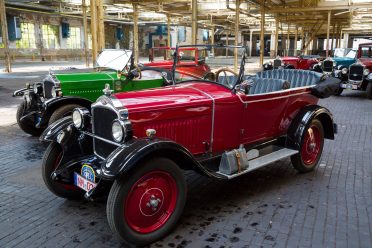
“Laubfrosch” The (not always) green bodywork earned the Opel 4 PS its affectionate nickname.
Jean-Marc Bach, chairman of the “4 PS Typgruppe” and proud owner of the 1927 4 PS that amazed the oldtimer community by crossing the Alps in 2004, declared the 2018 meeting a resounding success.
Despite the heat: A mega-weekend for the “Laubfrosch”
“That was a mega-weekend”, concluded Bach, whose passion for Opel began with his boyhood admiration for the 1966 Kadett C Coupé. “The highlight, of course, was the visit to Rüsselsheim, the ‘Rennbahn’ and the ‘Opel Classic Werkstatt’. We covered around 120 km in our oldies but had only one minor technical fault – despite the hot weather! A big thank-you to Joachim Busshardt, Andrew Leuchtmann, Christian Gottheit and their families for the top organisation!”
September 2018
